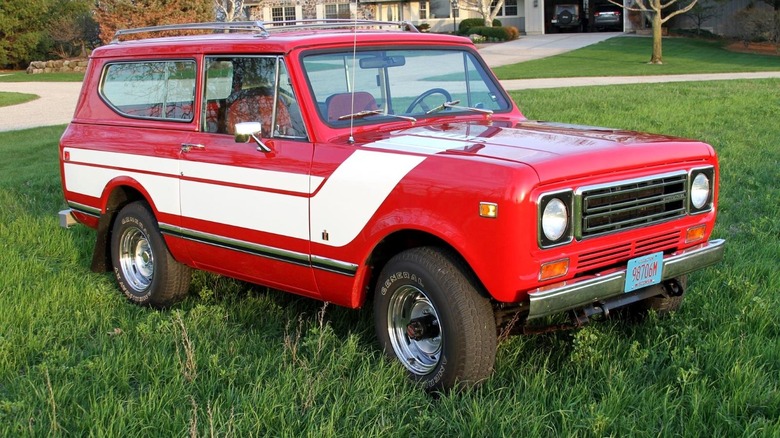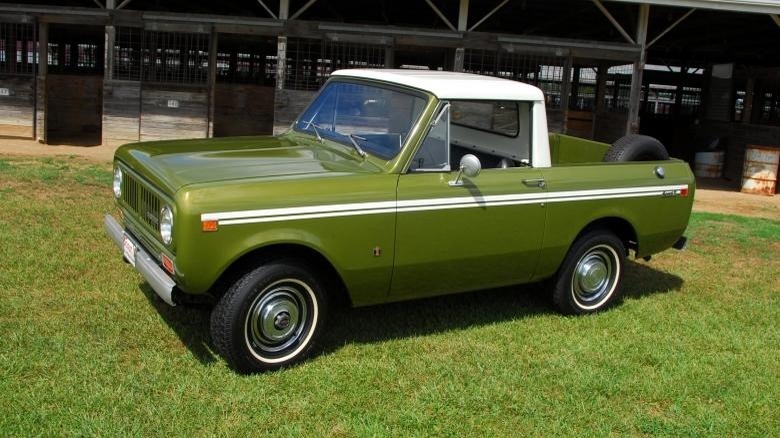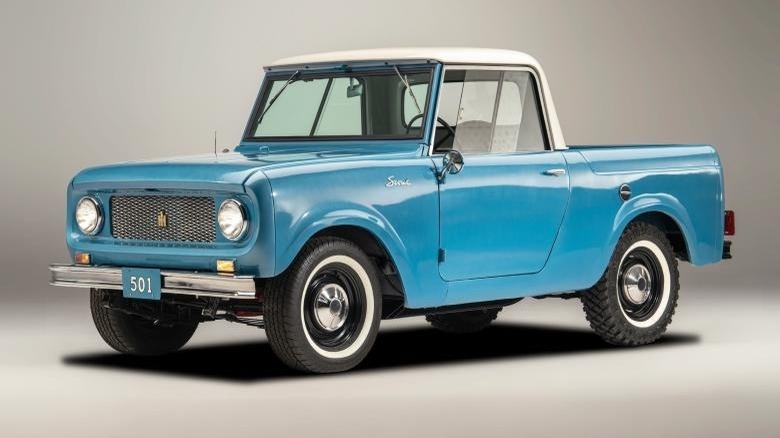Why Was The International Harvester Scout Discontinued?
International Harvester (IH) is emblematic of how thin the line between success and failure can be when it comes to the automotive industry. The company was founded in 1902 through a merger between McCormick Harvesting Machine Company, the Deering Harvester Company, and three other smaller companies, but its history dates as far back as 1831 with Cyrus Hall McCormick's horse-drawn reaper. In the early 1900s, IH's production efforts were primarily focused on making grain harvesting equipment, tractors, trucks, and pickups, but by 1961, its product offering had grown far beyond farm equipment and heavy trucks to include, among others, the truck-based Travelall station wagon, industry's first four-door crew-cab pickup (called Travelette), and the all-purpose International Harvester Scout, which was introduced in November 1960 ahead of the 1961 model year to compete for market share against the Jeep CJ model.
The Scout 80 was available with different configurations that could turn it into a pickup, open-top roadster, or station wagon (Travel Top). Rear-wheel drive (standard) and four-wheel drive options were also offered, alongside a 2.5-liter four-cylinder engine (which was actually a 304 cubic-inch V8 cut in half) that made around 93 horsepower and 135 lb-ft of torque. Not surprisingly, the IH Scout proved to be an instant hit, with its off-road prowess, practical design, relatively advanced mechanicals, as well as stout, rugged, and distinctive styling fuelling consumer enthusiasm for the commercial utility vehicle. Between the original International Scout and the second-gen International Harvester Scout 2 that was first released in 1971, the automaker managed to move 532,674 units by the time it stopped making the Scout in 1980. But why exactly was the International Harvester Scout discontinued, and is it making a comeback? Here's everything you should know.
Why did International stop making Scouts?
Despite being the best-selling vehicle in the company's history, International Harvester made the decision to discontinue the Scout due to several factors. One such reason is lack of funding. Around the mid-1970s, IH's profit margins began to dwindle, partly due to the 1973 oil crisis, which caused a recession, and rivals like the Ford Bronco eating into the International Scout's market share following its introduction in 1966. This, coupled with the fact that the firm still had to share the fewer resources among its numerous business divisions, made it difficult to maintain quality or continue production long term, despite sales and profits reaching record highs in 1979.
The company being deep in debt and dealing with mismanagement, misuse of funds, and its limited dealership network were also contributing factors. But the final blow for the famed International Harvester Scout was the strike by the United Auto Workers (UAW) over work rules. The shutdown, which began in November 1971, lasted for 172 days, and would have a major impact on the fate of the Scout. While IH was still reeling from the effects of the strike on productivity and the bottom line (the company lost $575 million as a result of the strike), the U.S. entered a recession in 1980, which ultimately led to Scout sales dropping to the lowest level in twenty years. These factors culminated in IH culling the Scout altogether, with the last International Harvester Scout rolling off the production line on October 21, 1980.
Is the International Scout coming back?
Yes, the iconic Scout nameplate will be making a comeback. But this time it will be under a different ownership — Volkswagen Group – which now owns the Scout trademark after it purchased Navistar, the successor to the defunct International Harvester, in 2021. Since acquiring the brand, VW has made very clear its intention to bring back the Scout badge. Earlier in 2023, the Wolfsburg-based auto giant confirmed it plans to build the new Scouts in America, with the truck and SUV both billed to experience rebirths as electric vehicles — yes, even at the risk of enraging older customers.
Given the powertrain change, it remains to be seen what the relaunched Scouts will have in common with the International Scout of old, but it should become clear soon enough, as the new Scout is set for official reveal on October 24, 2024. The new Scout models are expected to go into series production at Scout Motors Production Center in Blythewood, South Carolina, in 2026.


